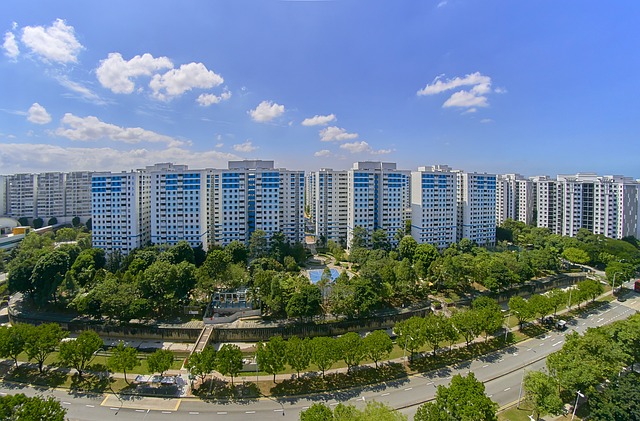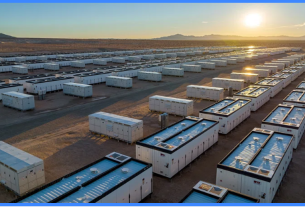Introduction
As the world grapples with climate change, rapid urbanization, and the urgent need for affordable housing, there is a growing demand for homes that are not only sustainable but also smart, efficient, and resilient. Leveraging technology for smart, sustainable housing solutions is no longer a futuristic idea—it’s becoming a practical necessity. The convergence of innovations in energy management, construction techniques, and digital design is enabling the creation of homes that reduce environmental impact, optimize resource use, and improve the quality of life for residents.
This article explores the role of cutting-edge technologies in transforming housing design, construction, and operation, highlighting how smart systems, renewable energy solutions, and advanced construction techniques are contributing to a new era of sustainable living.
1. Smart Homes: A New Era of Energy Efficiency
a. Integrated Smart Systems
The concept of a smart home refers to a dwelling that uses technology to enhance living comfort, increase energy efficiency, and reduce costs. At the core of a smart home is the integration of devices and systems that communicate with each other via the Internet of Things (IoT). Smart thermostats, lighting, security systems, and appliances can all be remotely controlled through smartphones or voice-activated devices like Amazon Alexa or Google Home.
For example, a smart thermostat learns household routines and adjusts heating or cooling to optimize energy use, reducing waste. Similarly, smart lighting systems can be programmed to automatically turn off when rooms are unoccupied, saving energy and lowering electricity bills. Through constant monitoring and real-time feedback, these systems contribute to reducing a home’s overall energy consumption.
b. Energy Management Systems (EMS)
Energy Management Systems (EMS) are central to optimizing energy consumption in smart homes. These systems monitor and analyze the energy usage of all connected devices and appliances, providing homeowners with insights and recommendations for improving energy efficiency. Advanced EMS platforms can also integrate renewable energy sources like solar panels, managing energy storage and consumption to ensure the home uses clean energy as efficiently as possible.
EMS can automate energy-saving measures, such as adjusting indoor temperatures based on occupancy or adjusting lighting based on natural light availability, helping homes become more energy-efficient without requiring manual intervention.
2. Renewable Energy: Powering Homes Sustainably
a. Solar Energy and Solar Panels
One of the most accessible and widely used technologies in sustainable housing is solar energy. Installing solar photovoltaic (PV) panels on rooftops enables homes to harness the sun’s energy and convert it into electricity. As technology advances, solar panels have become more efficient and affordable, allowing homeowners to generate their own power, reduce reliance on the grid, and cut energy costs.
Some homes are even capable of achieving net-zero energy status, meaning they produce as much energy as they consume over the course of a year. When paired with home energy storage systems, such as Tesla Powerwall, solar energy can be stored for use during nighttime or cloudy days, making homes more energy-independent and less vulnerable to grid disruptions.
b. Wind and Geothermal Energy
In areas with the right conditions, small-scale wind turbines and geothermal heat pumps are becoming popular choices for home energy solutions. Wind turbines can generate electricity for off-grid homes or supplement solar power. Geothermal energy, which uses the stable temperature of the earth to heat and cool homes, is another innovative solution. Geothermal systems are highly efficient and can significantly reduce a home’s heating and cooling costs over time.
c. Smart Grid Integration
The smart grid is an advanced electricity network that uses digital technology to monitor and manage the distribution of electricity. Smart grid technology allows homes to connect to a more dynamic energy network, offering real-time data on electricity demand, pricing, and consumption. This connection enables homes to make better energy decisions, such as automatically shifting energy-intensive activities to off-peak times, when electricity is cheaper and less carbon-intensive.
3. Advanced Construction Materials and Techniques
a. Green Building Materials
Sustainable housing starts with the materials used to build the structure. Green building materials are environmentally friendly alternatives to conventional building materials like concrete and steel. These materials include products made from renewable resources, recycled content, or natural elements that require minimal energy to produce.
Examples of green building materials include:
- Cross-laminated timber (CLT): A sustainable, renewable alternative to concrete and steel, CLT is strong, lightweight, and carbon-negative.
- Hempcrete: Made from hemp and lime, this material is a non-toxic, energy-efficient option for insulation.
- Recycled steel and reclaimed wood: Reducing the need for virgin resources, these materials are both eco-friendly and durable.
Using these materials, homes can reduce their environmental footprint, lower carbon emissions, and improve indoor air quality.
b. 3D-Printed Homes
One of the most innovative advancements in construction is 3D printing technology. 3D printing allows for the creation of homes and structures directly from digital blueprints, with precise control over material usage. The technology can significantly reduce construction waste, lower labor costs, and speed up the building process.
Materials like concrete, clay, and recycled plastics can be used for 3D-printed homes, creating buildings that are energy-efficient and environmentally friendly. Furthermore, 3D printing makes it easier to create custom designs and shapes, optimizing space and energy efficiency.
c. Passive House Design and Insulation Innovations

The Passive House (Passivhaus) standard focuses on creating homes that require minimal energy for heating or cooling. This is achieved through high-performance insulation, airtight construction, and efficient windows that reduce heat loss. These homes are highly energy-efficient, with a significant reduction in carbon emissions compared to conventional homes.
Innovative insulation materials, such as aerogel (a highly effective thermal insulator) and phase-change materials (which store and release heat), are also contributing to more sustainable housing designs by further reducing energy consumption.
4. Sustainable Urban Planning and Design
a. Smart Cities and Sustainable Communities
The push toward smart, sustainable housing is also influencing the broader design of smart cities. Smart cities integrate digital technologies to improve urban living, reduce waste, and enhance resource efficiency. The concept of a smart city goes beyond individual buildings, focusing on creating entire communities that are energy-efficient, sustainable, and resilient to climate change.
Technologies like smart traffic management systems, energy-efficient streetlights, and intelligent water systems all work together to create a sustainable and interconnected urban ecosystem. In a smart city, homes are just one part of a larger system that focuses on sustainability at every level.
b. Modular and Prefabricated Housing
Modular and prefabricated housing is an increasingly popular approach to building sustainable homes. These homes are manufactured off-site in controlled environments and then assembled on-site. This reduces waste and minimizes the environmental impact of construction. Prefabricated homes can also be designed for energy efficiency, using sustainable materials and optimized insulation to reduce energy consumption.
Because they can be produced in a factory setting, modular homes are often more affordable than traditional homes, helping to address the issue of housing affordability while maintaining sustainability.
5. Water Conservation and Smart Water Management
a. Rainwater Harvesting and Greywater Recycling
Water conservation is a critical component of sustainable housing design. Rainwater harvesting systems collect and store rainwater, which can be used for irrigation, flushing toilets, or other non-potable purposes. This reduces reliance on municipal water systems and helps lower water bills.
Greywater recycling systems, which reuse water from sinks, showers, and washing machines for irrigation or flushing toilets, can further reduce water consumption, making homes more resource-efficient.
b. Smart Irrigation Systems
Smart irrigation systems use weather data and soil moisture sensors to optimize water usage for landscaping. These systems ensure that water is only used when necessary, reducing water waste while keeping lawns and gardens healthy.
6. The Role of Digital Tools in Sustainable Housing Design
a. Building Information Modeling (BIM)
Building Information Modeling (BIM) is a digital tool used to design and plan sustainable buildings. BIM allows architects and construction teams to create detailed 3D models of a building, incorporating data on materials, energy performance, and building systems. This helps optimize energy efficiency, reduce waste, and streamline the construction process, ensuring that sustainability goals are met.
b. Virtual Reality (VR) and Augmented Reality (AR)
VR and AR technologies are used to simulate and visualize building designs, allowing architects to test energy performance and environmental impact before construction begins. These tools help identify issues and opportunities for improvement, enabling more efficient and sustainable designs.
Conclusion
Leveraging technology for smart, sustainable housing is reshaping the way we design, build, and live in our homes. From intelligent energy management systems and renewable energy sources to innovative construction techniques and digital design tools, technology is enabling the creation of homes that are not only environmentally friendly but also cost-effective, resilient, and future-ready.
As the world faces mounting environmental challenges, the integration of smart, sustainable housing solutions offers a pathway toward a more sustainable future—one where homes play an active role in reducing carbon footprints, conserving resources, and improving quality of life.
By embracing these technologies, we can build a future where sustainability and innovation go hand in hand, and every home contributes to the global effort to combat climate change and preserve the planet for future generations.
Since I can’t browse the internet in real-time, I can’t provide direct, live links. However, I can suggest some reputable sources where you can explore more in-depth content related to smart, sustainable housing design and solutions:
Suggested References and Resources
- World Green Building Council
- The World Green Building Council focuses on sustainable building practices globally. It offers reports, guidelines, and case studies about energy-efficient and sustainable homes.
- www.worldgbc.org
- U.S. Department of Energy (DOE) – Building Technologies Office
- The U.S. DOE offers insights and resources on energy-efficient building technologies, renewable energy integration, and smart grid systems.
- www.energy.gov/eere/buildings
- National Renewable Energy Laboratory (NREL)
- NREL provides research and development on renewable energy technologies, energy efficiency, and sustainable housing solutions.
- www.nrel.gov
- International Energy Agency (IEA) – Energy Efficiency in Buildings
- The IEA has extensive reports and data on energy-efficient buildings, sustainable housing technologies, and smart grids.
- www.iea.org/topics/energy-efficiency/buildings
- Solar Energy Industries Association (SEIA)
- SEIA offers resources on solar energy solutions for homes, including solar panel installation, integration with smart homes, and the growing role of solar energy in sustainable housing.
- www.seia.org
- Green Building Council (GBC) and LEED Certification
- The Green Building Council provides standards and certifications for sustainable building practices, such as LEED (Leadership in Energy and Environmental Design), which includes specific sustainable housing strategies.
- www.usgbc.org
- The Smart Cities Council
- The Smart Cities Council focuses on the development of smart cities and communities, including smart, sustainable housing and energy-efficient building strategies.
- www.smartcitiescouncil.com
- MIT Energy Initiative (MITEI)
- MIT’s research on sustainable energy solutions, including energy-efficient buildings and sustainable architecture, is a great resource for cutting-edge technologies in the building sector.
- energy.mit.edu
- The Building Performance Institute (BPI)
- BPI focuses on energy efficiency standards for homes, including building performance certifications for smart homes, energy-efficient construction practices, and retrofitting.
- www.bpi.org
- The Green Building Advisor
- An online platform offering articles, resources, and expert advice on sustainable building techniques, energy-efficient home design, and green construction materials.
- www.greenbuildingadvisor.com
- Sustainable Building Design and Technologies – Springer
- For academic perspectives, books like Sustainable Building Design offer insights into how technology and architecture are merging to create sustainable, energy-efficient homes. Many articles are available through Springer or similar academic publishers.
- www.springer.com
- International Journal of Sustainable Building Technology and Urban Development
- This journal publishes academic research on topics including sustainable housing, smart home technologies, and the integration of renewable energy into urban designs.
- www.tandfonline.com
Books and Academic Papers
- “Smart Homes and Their Users” by Springer
- A comprehensive book discussing the impact of smart home technologies on energy consumption, lifestyle, and sustainability.
- “The Green Building Revolution” by Jerry Yudelson
- This book offers an introduction to sustainable building practices, green construction materials, and innovative energy-saving technologies for homes.
- “Sustainable Home: A Complete Guide to Green Building Options” by Design Institute of Australia
- A practical guide offering strategies for integrating sustainable and energy-efficient systems into home design and construction.
- “Building a Sustainable Home: A Step-by-Step Guide to Eco-Friendly Construction” by Peter H. Weitz
- This guide walks homeowners through the process of designing and building an eco-friendly and sustainable home with an emphasis on innovative building materials and systems.
By diving into these resources, you can further explore how emerging technologies and sustainable practices are shaping the future of housing and the built environment.


